Transportation Research Update

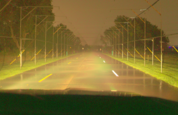
MnDOT is partnering with 3M and Roads & Bridges Magazine to present, "Setting a Wet Reflective Pavement Marking Specification" on Tuesday, April 27, 2021 at 11 a.m. CST.
The performance of your road markings makes a difference in keeping your roads safe, day or night, wet or dry. Learn about wet reflective technology, test methods and pavement marking assessments and prioritization strategies for your roads. Hear from industry colleagues in Minnesota on the process of building a wet reflective specification (including information from a recently completed MnDOT & Local Road Research Board research study).
Local Speakers
- Matt Wilding, PhD (Speaker) 3M, Advanced Product Development Specialist
- Ethan Peterson (Speaker) MnDOT, Traffic Engineer
- Victor Lund, PE (Speaker) St. Louis County, Traffic Engineer
Visit 3M Technology Talks to register.
|
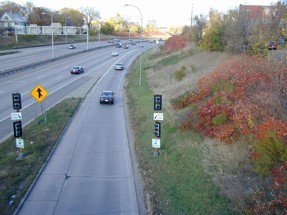
TRAFFIC & SAFETY — The National Highway Traffic Safety Administration has proposed a regulation that all new cars be required to broadcast a basic safety message (BSM) that conveys cars’ position, speed and acceleration. Such future vehicle-to-vehicle communications will enhance highway safety and also potentially give MnDOT’s Regional Transportation Management Center (RTMC) significantly more reliable real-time data for traffic operations. Researchers developed a traffic state estimator that will be able to use data from future BSMs instead of information from less accurate loop detectors and highway cameras to convey the real-time state of traffic on highways. As more cars use BSMs, the data of hundreds of thousands of vehicles will allow RTMC to more efficiently manage traffic, increasing safety and saving time and money. The project is a step for MnDOT toward the effective use of data from the coming connected vehicle reality.
Report 2021-08
|
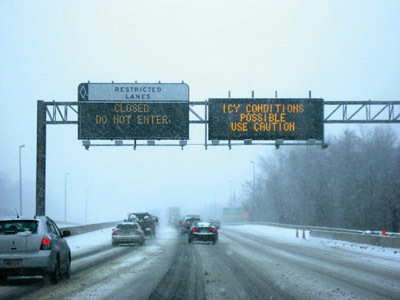
SAFETY — MnDOT maintains nearly 400 dynamic message signs (DMS) along the state’s highways. The Regional Transportation Management Center displays real-time messages to warn motorists of congestion, roadwork or an incident ahead that could be hazardous or cause a delay. DMS use to convey weather alerts has been limited to blizzards and other very isolated winter conditions. MnDOT has been concerned about the timeliness of weather messages and the chance that such messages could be overused, possibly leading motorists to take them less seriously.
To make winter road weather alerts most effective, researchers developed a software interface to acquire weather alerts from the National Weather Service’s system and translate them into text messages for DMS. The system selects the appropriate DMS locations and posts the alert message until it expires. Operators can return to manually posting or removing alerts at any time. MnDOT intends to begin using this system for blizzard and snow squall alerts. The automatic option for DMS messages will enhance the timeliness and accuracy of DMS alerts for severe weather and allow RTMC operators to attend to other work.
Report 2021-RTMC1
|
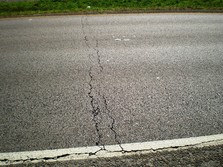
MATERIALS & CONSTRUCTION — A new method for evaluating the low-temperature cracking potential of asphalt mixtures, the Indirect Tensile Asphalt Cracking Test (IDEAL-CT), works at least as well as MnDOT’s current testing approach, but can be run more quickly and inexpensively. The test can be used to both evaluate quality control (QC) of asphalt mixture batches as they are readied for laying in the field and for quality assurance (QA) after installation.
An evaluation of asphalt binders and mixtures from 2018 and 2019 construction sites verified the reliability of the new method, which takes hours, instead of days to perform. Unlike the current test, that’s fast enough to check asphalt mixture batches being hauled to a construction site. If MnDOT shifts from current, volumetric or recipe-based asphalt design and QA/QC approaches to performance-based balanced mix design, it may also adopt the IDEAL-CT method.
Report 2021-02
|
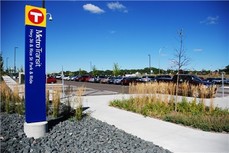
MULTIMODAL — Researchers studied the effects of the Twin Cities’ Metro Transit Green Line light rail transit on automobile traffic on parallel and adjacent roadways. Using annual average daily traffic data from before and after the Green Line’s opening in 2014, researchers showed that the light rail transit line decreased automobile traffic on nearby roads as light rail ridership increased each year. In addition, a 2016 Metro Transit on-board survey of nearly 2,000 park-and-ride users guided researchers in developing a model to assist planners in effective design and placement of park-and-ride facilities.
Report 2021-03
|

"Four small chain-link fences have saved about 100 turtles a year from being crushed to death on Minnesota roads.
The fences, installed over the past three years, have cut mortalities by as much as 85% at popular turtle crossings, showing they may be a relatively cheap and effective tool for bringing the state's turtle populations back."
A recent Star Tribune article features a collaborative research project with MnDOT and the Minnesota Zoo installing small animal exclusion fencing.
|
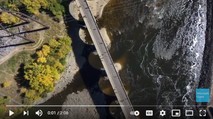
MnDOT engineers are donning mixed reality glasses to enhance their inspection of bridges. Bridge inspectors recently piloted mixed reality technology to process and view detailed 3D imagery of the Stone Arch Bridge, which was captured by drones. The case study was recently featured by Microsoft and Bentley Systems in a Microsoft technology forum and the following video. This work is part of an ongoing research effort at MnDOT to advance the use of Unmanned Aircraft Systems in bridge inspections.
Reimagine Bridge Inspection with Azure Remote Rendering and HoloLens (YouTube Video)
|
We're on LinkedIn! Follow our new MnDOT Research & Innovation page for updates on research projects, new resources, and to connect with other transportation practitioners.
This newsletter is produced by the MnDOT Office of Research & Innovation. If you have a question or need content in an alternative format, please contact our office at research.dot@state.mn.us or 651-366-3738.
|